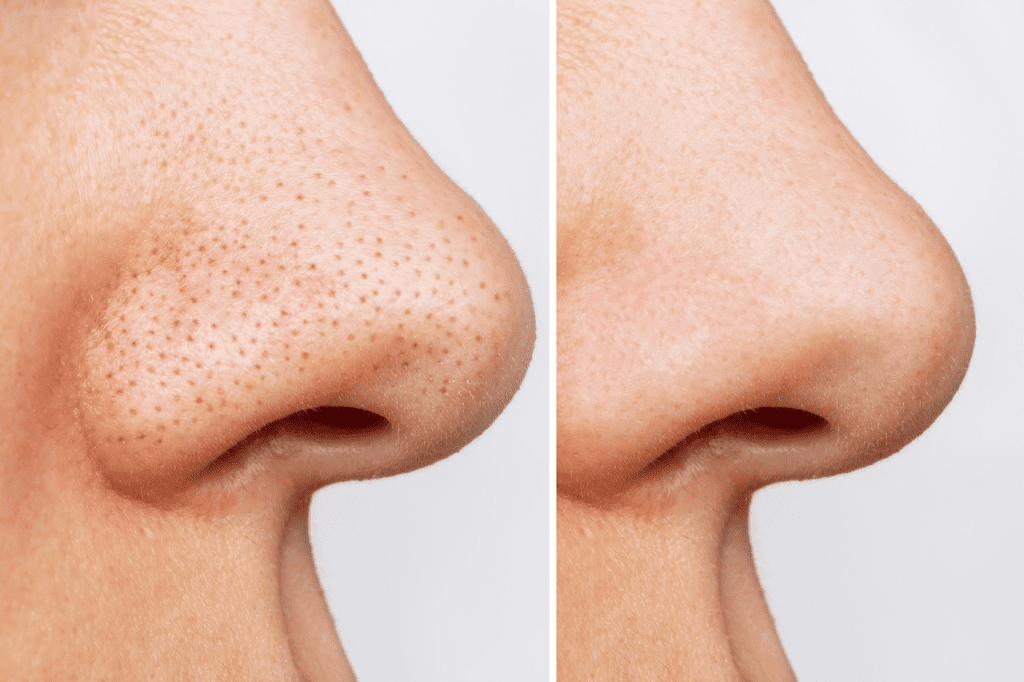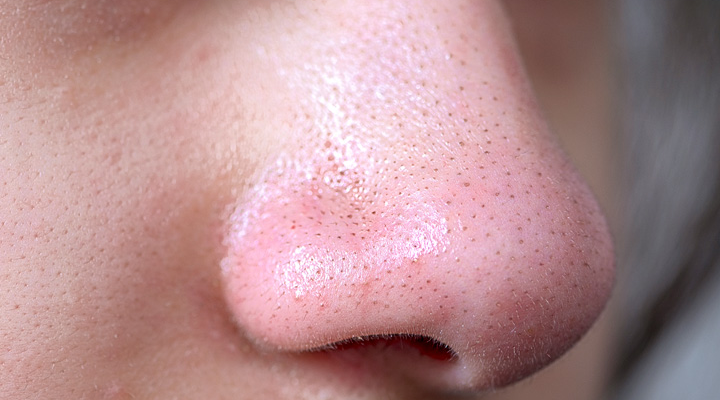
Sebaceous filaments are a natural and essential part of your skin’s function, but they are often misunderstood. Many people confuse them with blackheads, and while they may look similar at first glance, sebaceous filaments serve a critical purpose. These tiny structures help transport oil from your sebaceous glands to the surface of your skin, ensuring that your skin stays hydrated and healthy.
In this article, we’ll dive into what sebaceous filaments are, how they differ from blackheads, and what you can do to manage them for smoother, clearer skin.

What Are Sebaceous Filaments?
Sebaceous filaments are threadlike structures that line your sebaceous glands, which produce oil (sebum) to keep your skin moisturized. These filaments help move the sebum from the glands to the surface of your skin, ensuring that it remains soft and hydrated. While they are entirely natural and necessary for skin health, sebaceous filaments can sometimes become more noticeable, especially when your skin is oily or pores appear enlarged.
Are Sebaceous Filaments Harmful?
The good news is that sebaceous filaments are not harmful. In fact, they play a vital role in keeping your skin and hair healthy by allowing sebum to travel through your pores. Sebum acts as a natural lubricant, keeping your skin hydrated and protecting it from environmental damage. Unlike blackheads, sebaceous filaments are not a form of acne and are not something that needs to be removed.
Sebaceous Filaments vs. Blackheads: What’s the Difference?
Sebaceous filaments and blackheads often get confused because they can look similar. However, they are entirely different:
- Sebaceous Filaments: These are a normal part of your skin’s oil production process. They appear as small, light-colored spots (typically gray, light brown, or yellow) and are flat against the skin. If you were to squeeze them, a waxy, threadlike substance may come out.
- Blackheads: Blackheads are a type of acne caused by clogged pores. They appear as dark, raised bumps and form when oil and dead skin cells get trapped inside the pore. The dark color comes from oxidation when the oil plug is exposed to air.
Who Do Sebaceous Filaments Affect?
Sebaceous filaments are present in everyone, but they may be more noticeable in some people. Certain factors contribute to how visible they are:
- Age: During puberty, sebaceous glands become more active, producing more oil, which can make sebaceous filaments more pronounced. As you get older, skin may sag, and pores can enlarge, making the filaments more visible.
- Skin Care Habits: Over-washing or spending too much time in the sun can dry out your skin, prompting your sebaceous glands to produce more oil. This can make sebaceous filaments stand out more.
- Thicker Hair Follicles: People with thicker hair follicles may notice more prominent sebaceous filaments.
Managing Sebaceous Filaments: What Can You Do?
While you can’t eliminate sebaceous filaments, you can minimize their appearance through proper skin care. Here are some effective ways to manage them:
1. Exfoliate Regularly
Exfoliation helps remove dead skin cells that can build up around sebaceous filaments, making them more visible. Opt for a gentle exfoliating scrub and use it 2-3 times a week. Be sure to use circular motions when applying the scrub and rinse with water afterward.
2. Use Salicylic Acid
Salicylic acid is a well-known ingredient in skincare products for its ability to dissolve dead skin cells and penetrate pores. This can help keep sebaceous filaments clear and reduce their visibility. Salicylic acid is available in cleansers, toners, and spot treatments, making it a versatile addition to your skincare routine.

3. Incorporate Retinoids
Retinoids, which are derivatives of vitamin A, can help prevent clogged pores and promote skin cell turnover. Products like Retin-A® or over-the-counter Differin® can be effective in managing sebaceous filaments. Retinoids may cause mild irritation or peeling at first, so it’s best to start slow and use them every other day.
4. Be Careful with Pore Strips
Pore strips can remove sebaceous filaments, but they also take away the natural oils that keep your skin hydrated. While they may offer a quick fix, they can dry out your skin and lead to irritation if used too often. If you decide to use pore strips, do so sparingly to avoid damaging your skin.
What Happens If You Squeeze Sebaceous Filaments?
Squeezing sebaceous filaments can be tempting, but it’s not recommended. If you press hard enough, you might extract a small amount of oil or a threadlike structure. However, this won’t solve the problem—your pores will refill with oil within a few days. Additionally, squeezing can irritate your skin, potentially causing redness, inflammation, or scarring.
It’s better to manage sebaceous filaments through proper skin care rather than attempting to remove them by force.
Preventing Sebaceous Filaments: Daily Care Tips

While sebaceous filaments are a natural part of your skin, here are a few tips to minimize their appearance:
- Wash Your Face Daily: Use warm water and a mild cleanser to remove excess oil and dirt.
- Moisturize Regularly: Even if you have oily skin, moisturizing helps maintain a healthy balance of hydration, preventing your sebaceous glands from going into overdrive.
- Use Noncomedogenic Products: These products are formulated not to clog pores, making them ideal for managing oily skin and sebaceous filaments.
- Avoid Touching Your Face: Your hands carry dirt and oils that can make your sebaceous filaments appear more prominent. Keep your hands off your face to minimize this.
Conclusion: Embrace Your Skin’s Natural Function
Sebaceous filaments are a normal, healthy part of your skin, playing an essential role in keeping it hydrated. While they may resemble blackheads, they serve a different purpose and are not harmful. With the right skincare routine—including gentle exfoliation, salicylic acid, and moisturization—you can manage their appearance while keeping your skin healthy.
Remember, your skin’s natural processes are there for a reason. Instead of fighting against them, embrace the balance of oil production, and give your skin the care it deserves.

